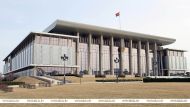MINSK, 2 March (BelTA) – The National Academy of Sciences of Belarus has received the first detailed evaluations of how much research stations affect the air environment in Antarctica, the press service of the National Academy of Sciences of Belarus (NASB) told BelTA.
According to the source, the planet's cleanest continent requires a set of environment conservation measures to be implemented as part of making plans for research activities and during the actual research activities that are legally permitted in Antarctica. At present there are about 70 all-season and seasonal research stations in Antarctica where about 1,000 people live in winter. The population rises up to 5,000 people in summer. The stations' impact on Antarctica's environment cannot be disregarded considering the unique cleanliness of the continent.
It is the first time that Sergei Kakareka, Head of the Transboundary Pollution Lab at the Nature Management Institute of the National Academy of Sciences of Belarus, has performed a detailed evaluation of the impact of pollutants and greenhouse gases from the main ground sources in Antarctica – diesel generators of all-season and seasonal research stations. According to the research, emissions from the Antarctic stations vary a lot and can be subdivided into seven groups. It has been found out that the 12 largest stations account for over three fourths of all the emissions on the continent.
Emissions in specific territories have also been evaluated in accordance with Antarctica's natural and biogeographic zoning charts. The results indicate that 41% of the emissions happen in Eastern Antarctica while 59% of the emissions happen in Western Antarctica. The emissions' density is at its highest in the area around the South Orkney Islands and the Adelie Land.
The Belarusian research will serve as a foundation for further improvement of estimates, for modeling and projecting the human-induced disturbance and its consequences in Antarctica. Results were published in the latest edition of the international journal Advances in Polar Science (APS).
Sergei Kakareka has won the contest “Top 10 results of activities of scientists of the National Academy of Sciences of Belarus in 2020 in the area of fundamental and applied research” with his computational simulation of the propagation of aerosol and gaseous impurities in the atmosphere of the Belarusian Antarctic Station and the establishment of trends in their changes over a period of 30 years.












